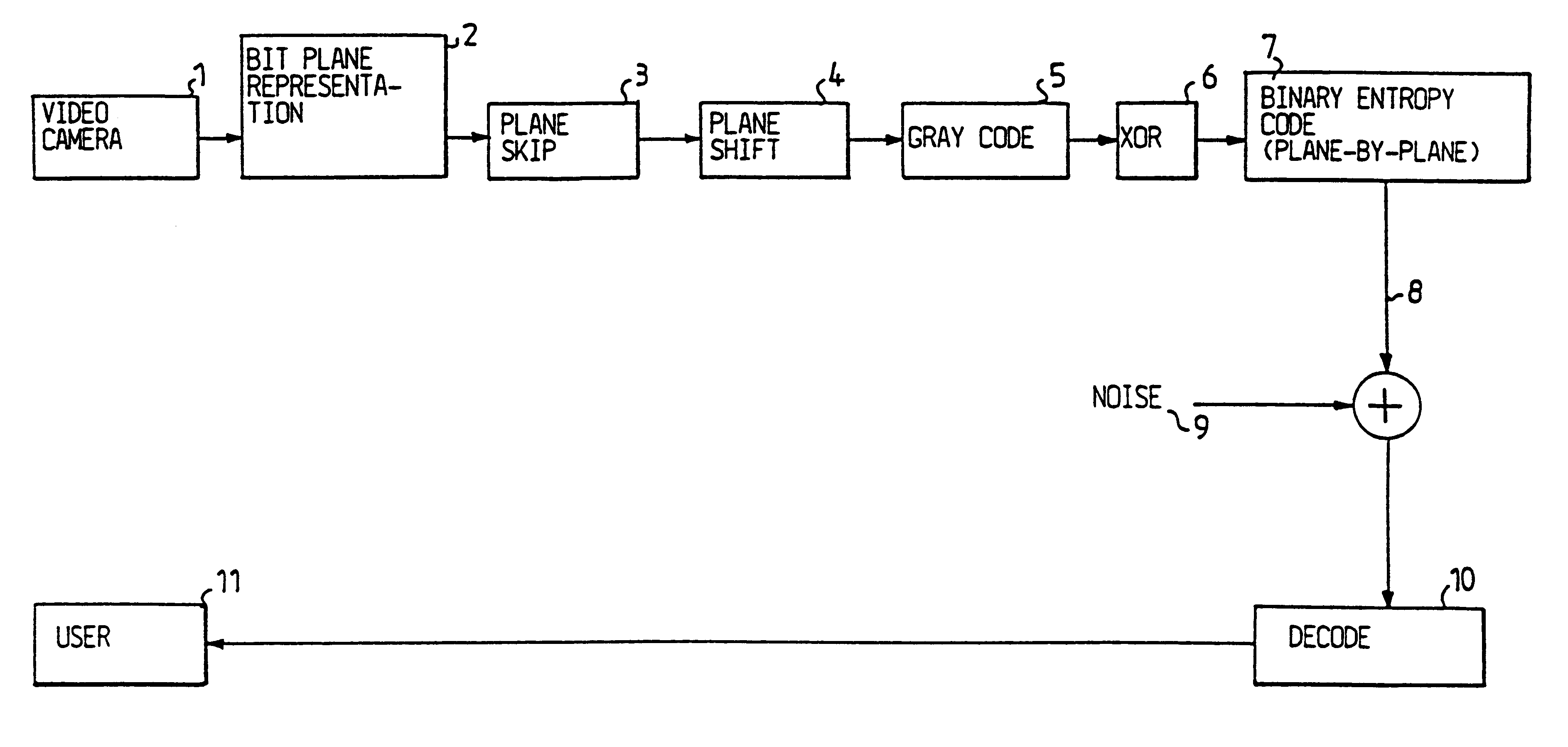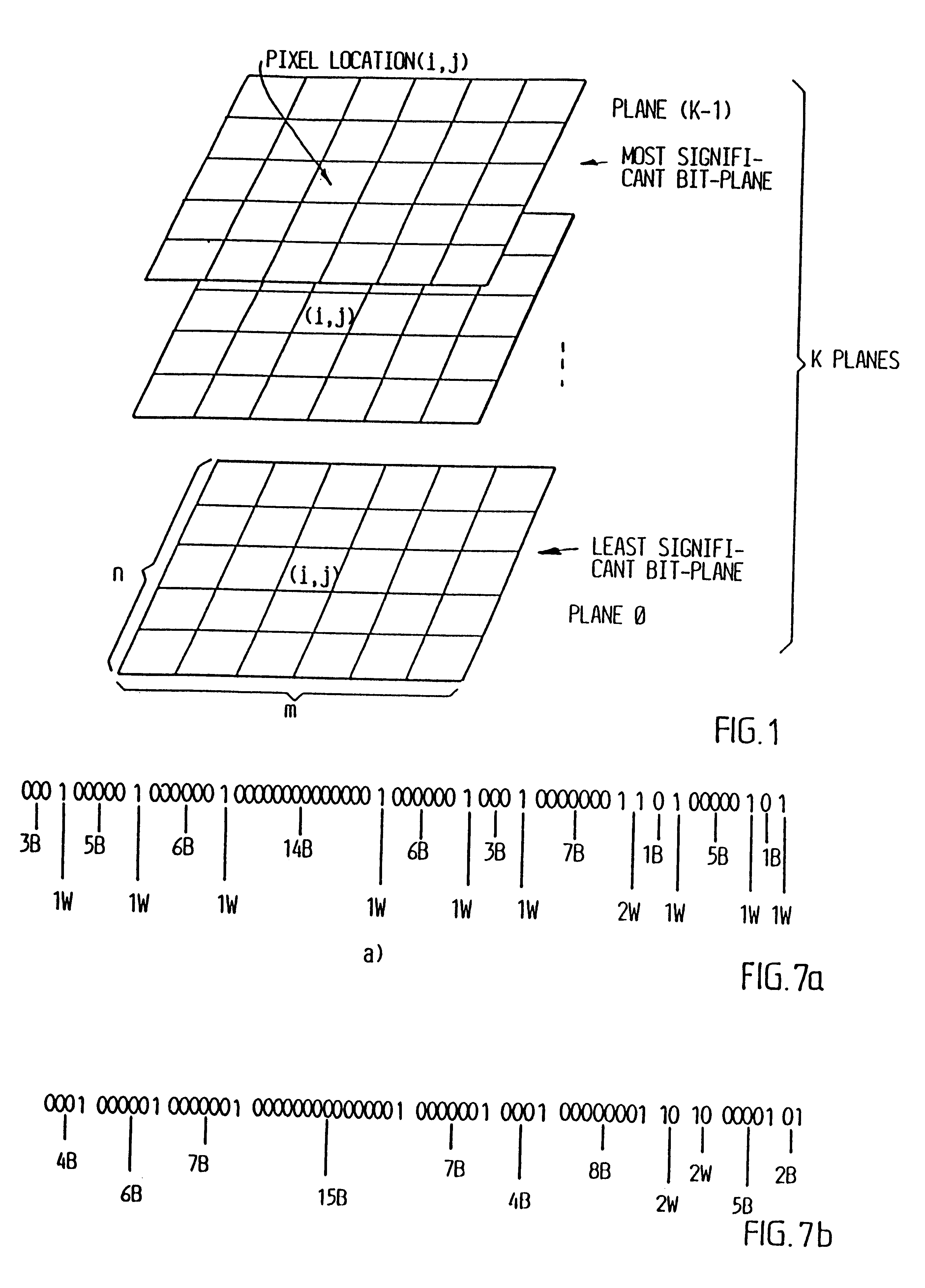Video coding
a technology of video coding and coding sequences, applied in the field of video coding, can solve the problems of insufficient transmission time of most applications, limited channel capacity, and high compression ratio of video,
- Summary
- Abstract
- Description
- Claims
- Application Information
AI Technical Summary
Benefits of technology
Problems solved by technology
Method used
Image
Examples
Embodiment Construction
When compressing a grey scale or colour digitalized image, it is first coded using the conventional bit plane coding technique, but in order to reduce the number of bits which are to be transmitted the lower order bit planes, i.e. the planes consisting of the least significant bits are skipped. This apriori reduction of the dynamics of the image of course results in a loss of information, which in turn results in that the compression is no longer lossless. Still the bits lost are the ones carrying the least information, i.e. the lossy step has been introduced in the least significant part of the information.
The achieved lossy method relies on the experimental fact that the human eye is relatively less sensitive to the type of distortion introduced by the coarser quantization caused by the skipping of the least significant bit planes. Moreover, these bits are often corrupted by noise, in particular thermal noise introduced by the sensors used for the image acquisition, cameras, CCDs,...
PUM
 Login to View More
Login to View More Abstract
Description
Claims
Application Information
 Login to View More
Login to View More - R&D
- Intellectual Property
- Life Sciences
- Materials
- Tech Scout
- Unparalleled Data Quality
- Higher Quality Content
- 60% Fewer Hallucinations
Browse by: Latest US Patents, China's latest patents, Technical Efficacy Thesaurus, Application Domain, Technology Topic, Popular Technical Reports.
© 2025 PatSnap. All rights reserved.Legal|Privacy policy|Modern Slavery Act Transparency Statement|Sitemap|About US| Contact US: help@patsnap.com



